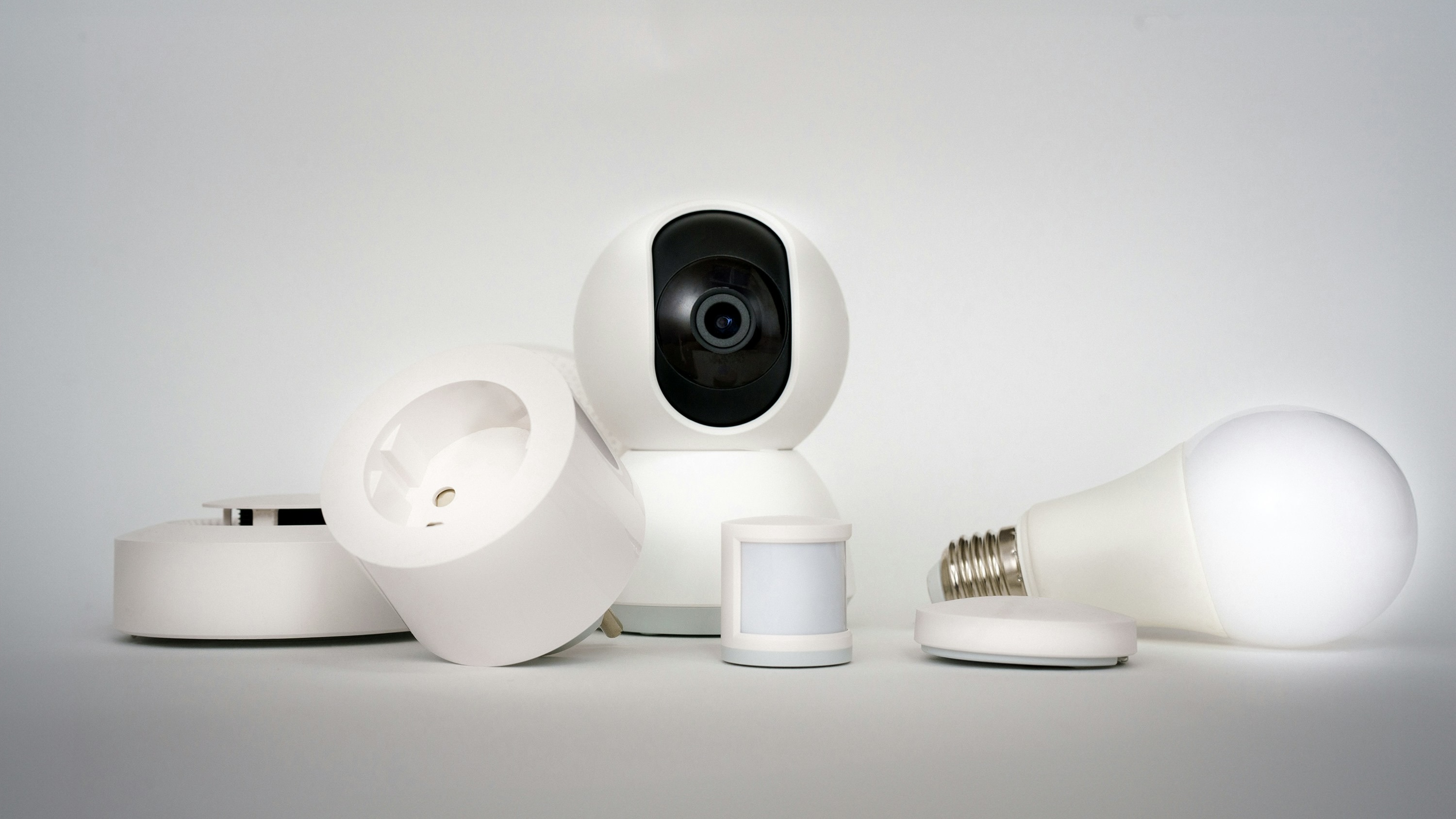
- Top 3
- 1. Best overall
- 2. Best memory foam mattress
- 3. Best hybrid mattress
- 4. Best eco-friendly mattress
- 5. Best budget mattress
- 6. Best foam support mattress
- 7. Best cooling mattress
- 8. Best orthopedic mattress
- 9. Best luxury mattress
- 10. Best customisable mattress
- 11. Best posture support mattress
- 12. Best anti-allergy mattress
- 13. Best spring mattress
- 14. Best mattress with built-in topper
- How to choose the best mattress
- How we test
- Mattress FAQs
- Reviewer panel

For a good night's sleep, you need to upgrade to the best mattress. If you don't know where to start, T3 are here to help as we've tested out a wide range of mattresses to find the ones that deliver the most comfortable and supportive sleep. This best mattress guide UK will help you find the perfect option, whatever your sleeping style, preferences or budget.
If you're struggling with an ancient, worn-out mattress, you'll likely find that the process of buying a new one has changed a lot over the years. While you can still head to a big out-of-town store to bounce up and down on a few options, the majority of mattress shopping now happens online (what a surprise). You can pick the mattress that suits you best, get it delivered as a bed-in-a-box and in most cases, try it out for at least 100 nights (sometimes up to a year) with the option to return it if it doesn't agree with you.
Our number one best mattress is the luxurious Simba Hybrid Pro, which combines springs and foams and delivers sumptuous comfort and impressive cooling properties. But this guide has plenty of memory foam, hybrid and spring-only options to choose from so you can find what's best for you.
As the mattress industry is fiercely competitive, big discounts are common (you can basically ignore RRP), so make sure to check out our best cheap mattress deals for a rundown of where to find the best bargains right now.
- Shopping from the US? Head to our best mattress US guide
T3's Top Picks
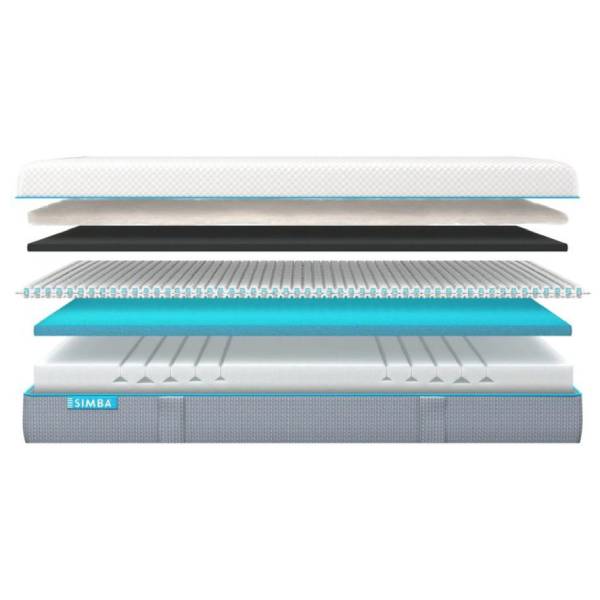
The best mattress overall
The Simba Hybrid Pro is a high-end pick for those who put comfort as a top priority.
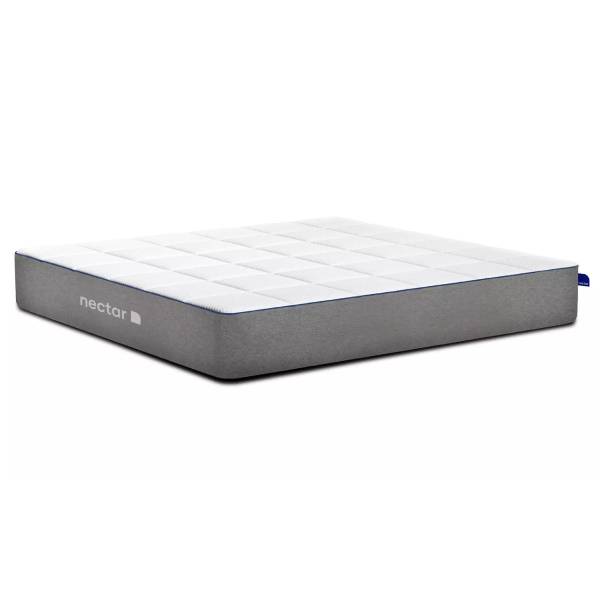
The best memory foam mattress
The Nectar Memory Foam mattress is the best option for people who love memory foam and love that sinking feeling.
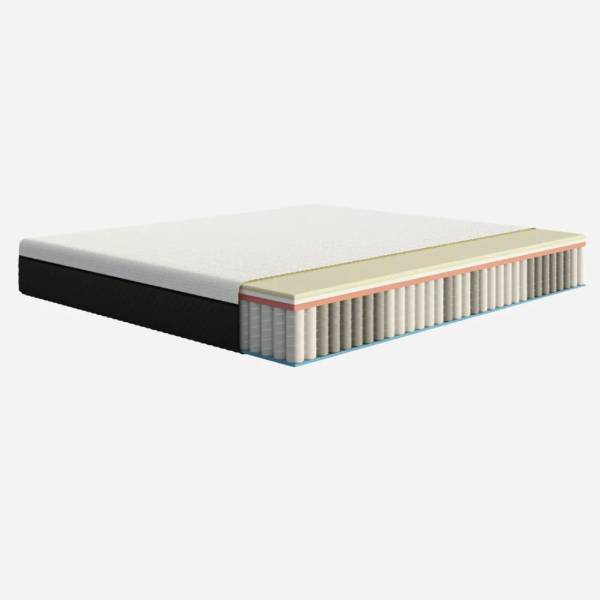
The best hybrid mattress
The Emma Hybrid Premium improves on its predecessors' temperature control and offers an excellent night's sleep.

Beth is Home Editor for T3, covering style, living and wellness. As a sleep expert, Beth is in the know about all the latest mattress launches, useful sleep hacks and how to elevate the cosiness of your bedroom. She's tried a few of the mattresses in this guide, so you know you can trust her advice.
Recent updates
We've updated our best mattress guide with more honourable mentions.
Best mattress ranking 2025
The best mattress overall
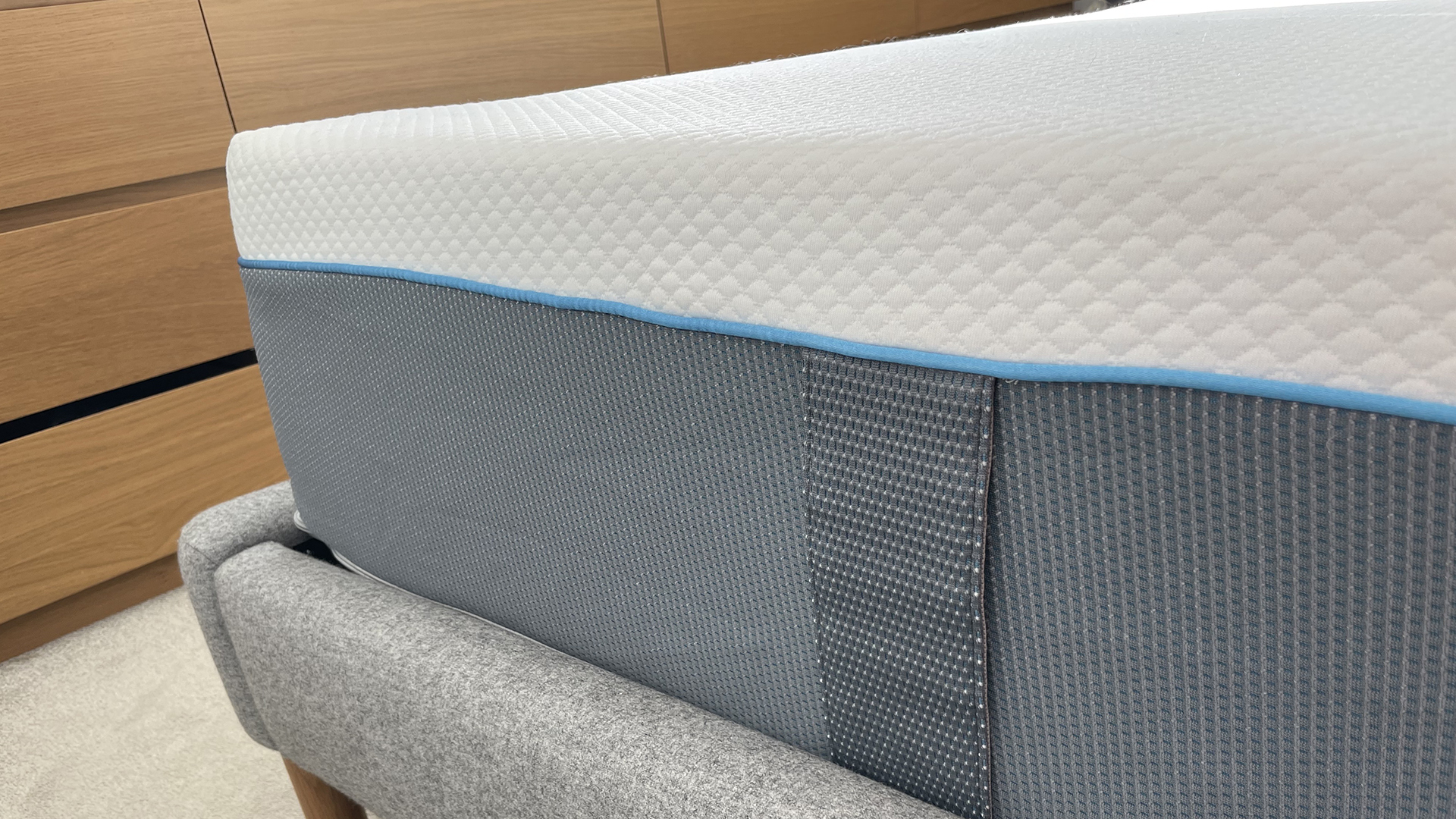

Specifications
Reasons to buy
Reasons to avoid
The Simba Hybrid Pro is one of Simba's high-end offerings, and delivers exceptional comfort. It's on the pricey side, but for the money, it's the best premium mattress around – in fact, it picked up the T3 Best Mattress Award for two years running, in 2021 and 2022.
The seven specially engineered layers include a dreamily soft top layer, a natural wool layer to help regulate temperature, and two layers of springs. The top layer of softness gives you something to sink into as you lay down, but just a little, before you hit the supportive layers underneath, which deliver a reassuring level of firmness. These firmer lower layers also make it easy enough to move around on, and the motion isolation and edge support is good too. Many memory foam mattresses can trap heat, but in our Simba Hybrid Pro review, our tester was very impressed with the temperature regulation on the Hybrid Pro. The only down-side of the design, really, is the lack of removable cover; a feature we'd usually expect at that kind of price point.
The Simba Hybrid Pro is rated 6.5 out of 10 on the firmness scale, which means it's at the softer end of medium. If you prefer something firmer, check out the Brook + Wilde Elite (number three in this list) in Firm, or the Eve Premium Hybrid instead (our Eve Premium Hybrid vs Simba Hybrid Pro breaks down the differences between those two). The Hybrid Pro sits at the pricier end of the market, but Simba mattress deals are a regular occurrence, so you shouldn't have to pay RRP. And if you like the sound of a Simba but can't afford this one, we also highly rate the cheaper, less advanced Simba Hybrid Original.
The best memory foam mattress
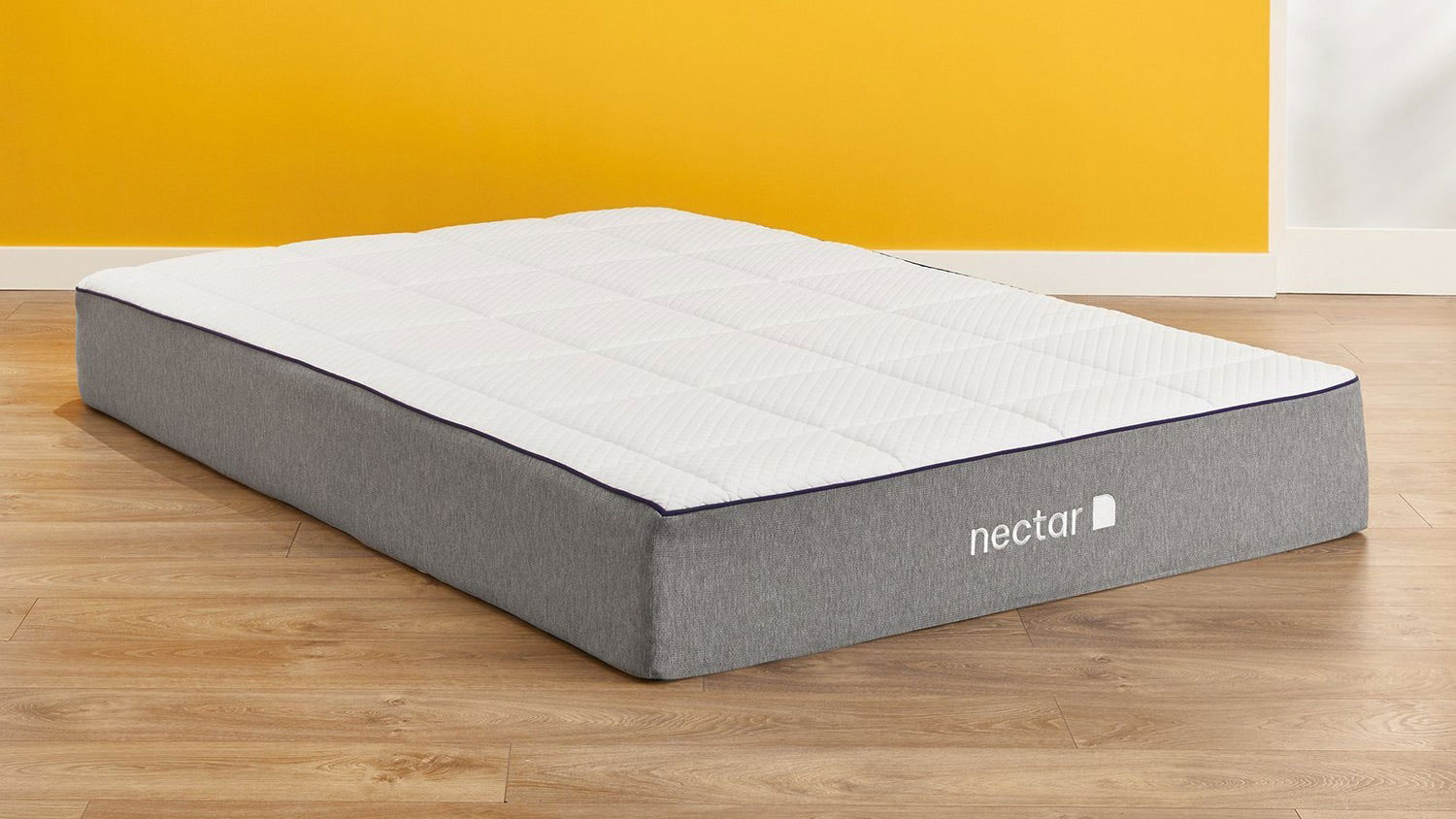

Specifications
Reasons to buy
Reasons to avoid
The best memory foam model, the Nectar mattress feels comfortable from the minute it comes out of its minimal packaging, and offers a medium-to-firm support level that suits any type of bed and all kinds of sleepers. There's a bit of give in the top layer, which neatly moulds around the body, while a supporting base layer adds the required firmness for a peaceful sleep. The adaptive cooling cover top layer is supposed to draw heat away from the body, and while we're not sure it actually does this, it certainly feels cooler than many memory foam options. In our Nectar mattress review, our tester noted some off-gassing when the mattress was first delivered, but this soon settled down.
Price-wise, Nectar sits in the middle of the market, and there are regular Nectar discount codes and deals to help you save (often, these deals mean free sleep accessories such as the Nectar mattress protector – one of the best mattress protectors around – to keep your mattress box-fresh). In fact, we've never seen this mattress selling at full price, so take those RRP figures with a huge pinch of salt. Nectar is a front-runner when it comes to extras. It was the first to offer a full 365-night trial (now a handful of brands have followed suit) and you get a lifetime warranty for your new mattress, too.
In the mid-range memory foam only sector, this mattress' obvious competitor is Emma – head to our Emma Original vs Nectar mattress showdown. We also think Eve is worth considering, with foam-only options at a range of price points.
The best hybrid mattress
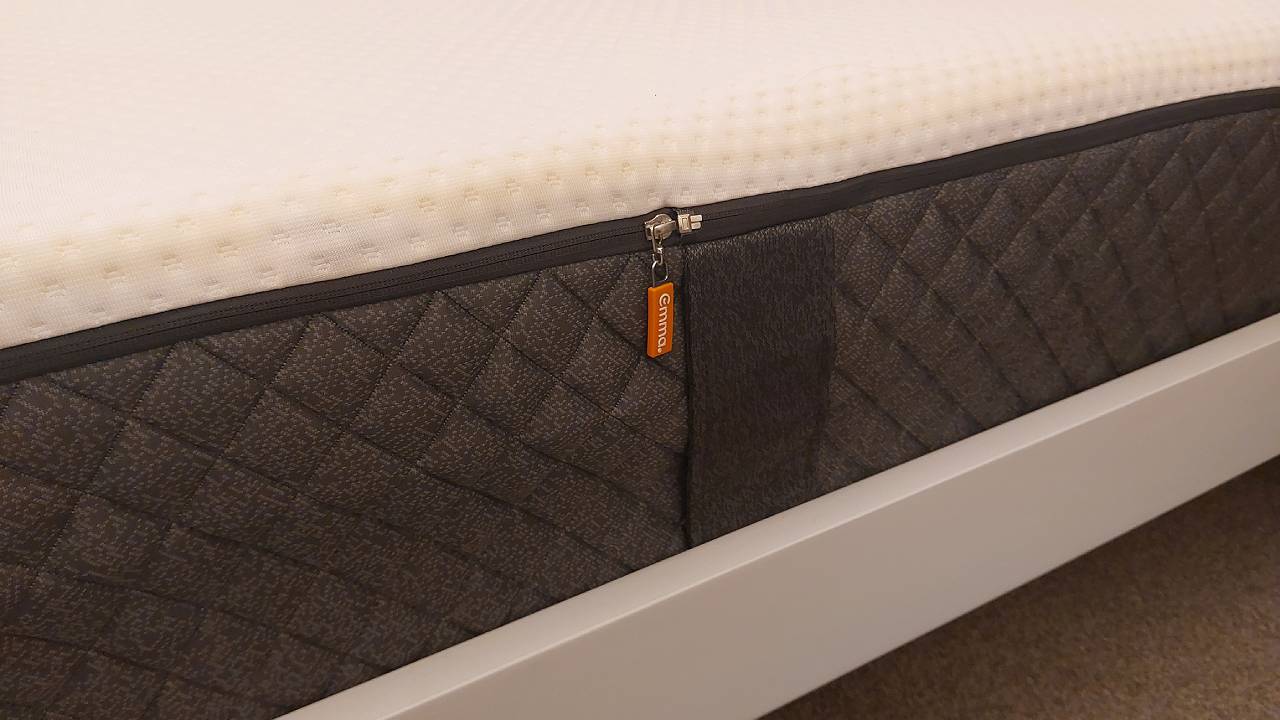

Specifications
Reasons to buy
Reasons to avoid
A new and improved version of the Emma Premium, the Emma Hybrid Premium has made some serious advancements when it comes to its heat control. The mattress has brilliant temperature control and heat regulation, which helps you keep cool and at a pleasant temperature throughout the night. Surprising, considering how soft, cosy and thick its cover feels.
Like most Emma mattresses, the Emma Hybrid Premium has a firm level of support and comfort, which might be firm for some but will suit most people and their sleep positions. The hybrid mix of foam and springs moulds to the body but doesn't give that sinking feeling you find with some hybrid mattresses... oh and it's pretty affordable too!
Read our full Emma Hybrid Premium mattress review for more details and to see why it won Best Mattress at the T3 Awards 2024.
The best eco-friendly mattress
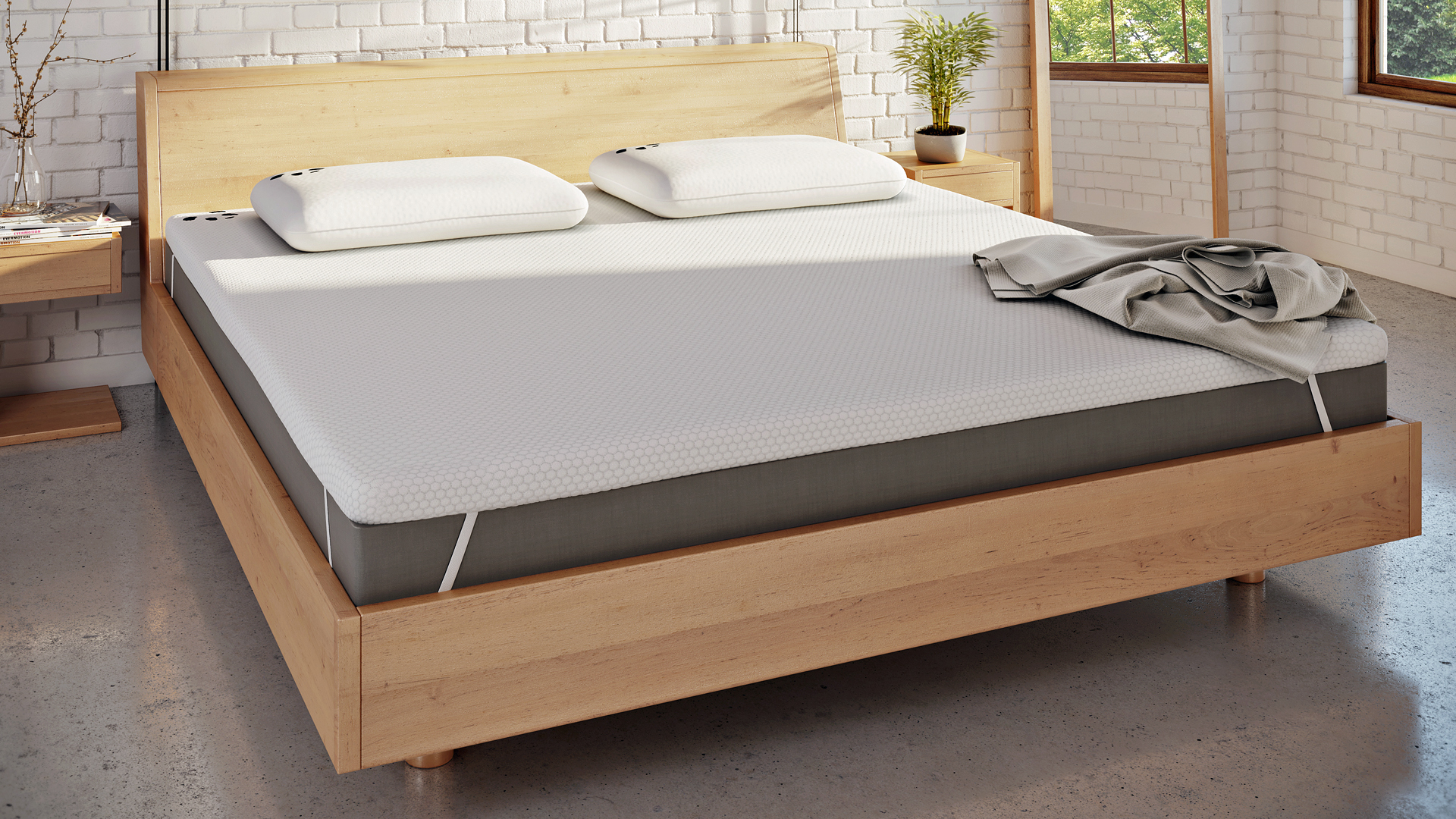

Specifications
Reasons to buy
Reasons to avoid
The first and only mattress from Panda London, the Panda Hybrid Bamboo mattress Pro is an eco-friendly firm and comfortable offering, made of premium bamboo materials. Bamboo is sturdy yet silky soft, meaning it'll last for a very long time. Panda's very own bamboo infused foam acts like memory foam that moulds to the body, cradles it and aligns the spine while you sleep.
Where Panda London rises above the rest is its use of eco-friendly, vegan and sustainable materials. All organic bamboo in Panda's products are sourced from approved forests, grown pesticide free and is vegan friendly. Panda reduces its environmental impact at every stage of the product’s lifecycle, and the foam in the mattress can be 100% recycled. See our 5-star Panda London Hybrid Bamboo mattress Pro review for more details.
The best budget friendly mattress


Specifications
Reasons to buy
Reasons to avoid
While there are plenty of premium hybrids on the market, you might not want to spend that much on your new mattress. Enter: the Eve Original Hybrid. Sitting in the middle of this brand's range, this mattress combines layers of different foams and springs to excellent effect. We found the medium-firm feel dreamily comfortable to sleep on, with great all-over support (although it does drop off slightly towards the edges).
As with all Eve mattresses, the temperature regulation from the foam was very impressive – no overnight overheating here. At 25cm thick, it's on the thinner side for a hybrid, although you might be grateful for that given Eve will only take it as far as the front door of your building (in our Eve Original Hybrid review, our tester struggled to get their Super King box up the stairs and into place).
There are regular Eve mattress discounts that take the price down to a very competitive mid-range price (although this brand tends to only discount one or two of its mattresses at any one time, so you might need to hang about for this one to get the price drop). If you don't need the springs, there's also a foam-only version of this mattress for a lower price (check out our Eve Original mattress review for more). And if you're really on a budget, we're also big fans of the Eve Lighter mattress, which is a stone-cold bargain.
The best supportive foam mattress


Specifications
Reasons to buy
Reasons to avoid
The OTTY Pure mattress pushes the boat out with some pioneering materials. In place of regular memory foam you've got a foam made from bamboo and infused with charcoal; both materials chosen for their temperature regulating, anti-fungal and antibacterial and hypoallergenic properties. It's hard to gauge those things when sleeping on it, but thankfully it also shines when it comes to comfort.
In our OTTY Pure review, our tester found this mattress superbly supportive, with decent temperature regulation and great build quality. OTTY says it's a 6.5 on the firmness scale but we think it feels firmer than that – perhaps a 7.5. The surface feels plush and soft when you press on it with your hand, but lying down there's great overall support, including underneath your hips. You'll also sink in very slightly, but this is a mattress you sleep 'on' rather than 'in'. The layer of generous 16cm springs are there more for support than bounce.
You do pay a premium for the bamboo and charcoal, so if this mattress is out of your price range, consider the OTTY Hybrid Original, which we were also impressed with. Or hold out for an OTTY discount code to take the price down. If you want the feel of more traditional memory foam, alternatives to explore would be the Emma Original or Eve Original.
The best cooling mattress
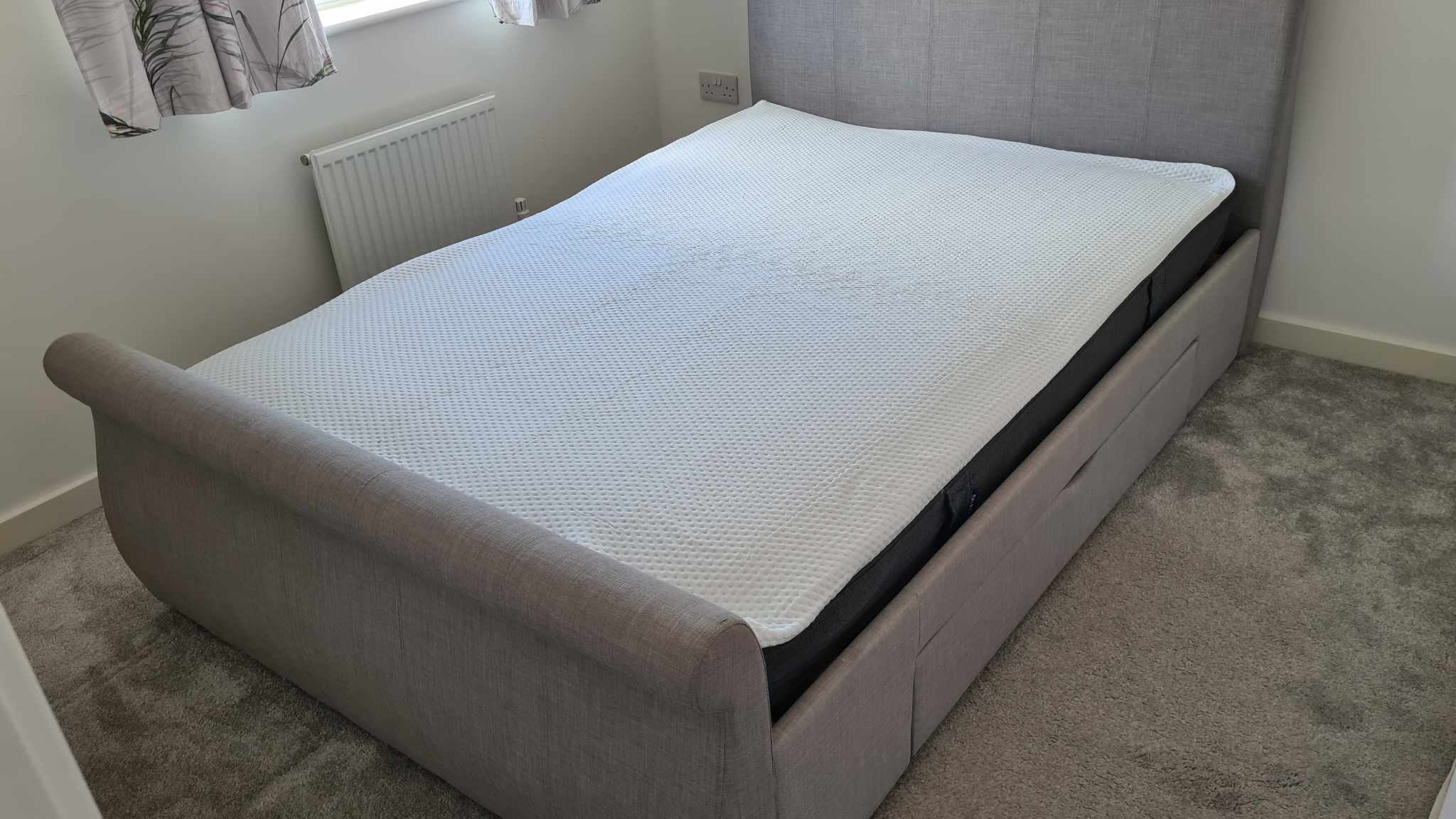
Specifications
Reasons to buy
Reasons to avoid
The Emma Hybrid Thermosync mattress (previously called the Luxe and NextGen mattress) is the best cooling mattress you can buy today. Previously, Emma's temperature regulation had some issues but the brand heard the feedback and worked hard to engineer a mattress that's cooling, breathable and doesn't trap heat: enter the Emma Hybrid Thermosync mattress.
With a 27cm depth and multiple layers of memory foam and springs, the Emma Hybrid Thermosync mattress offers unrivalled hybrid support. It might be a little soft for some, but its Thermosync technology better regulates your body heat to help you obtain a deeper sleep.
Read our full Emma Hybrid Thermosync mattress review for more info.
The best orthopedic mattress
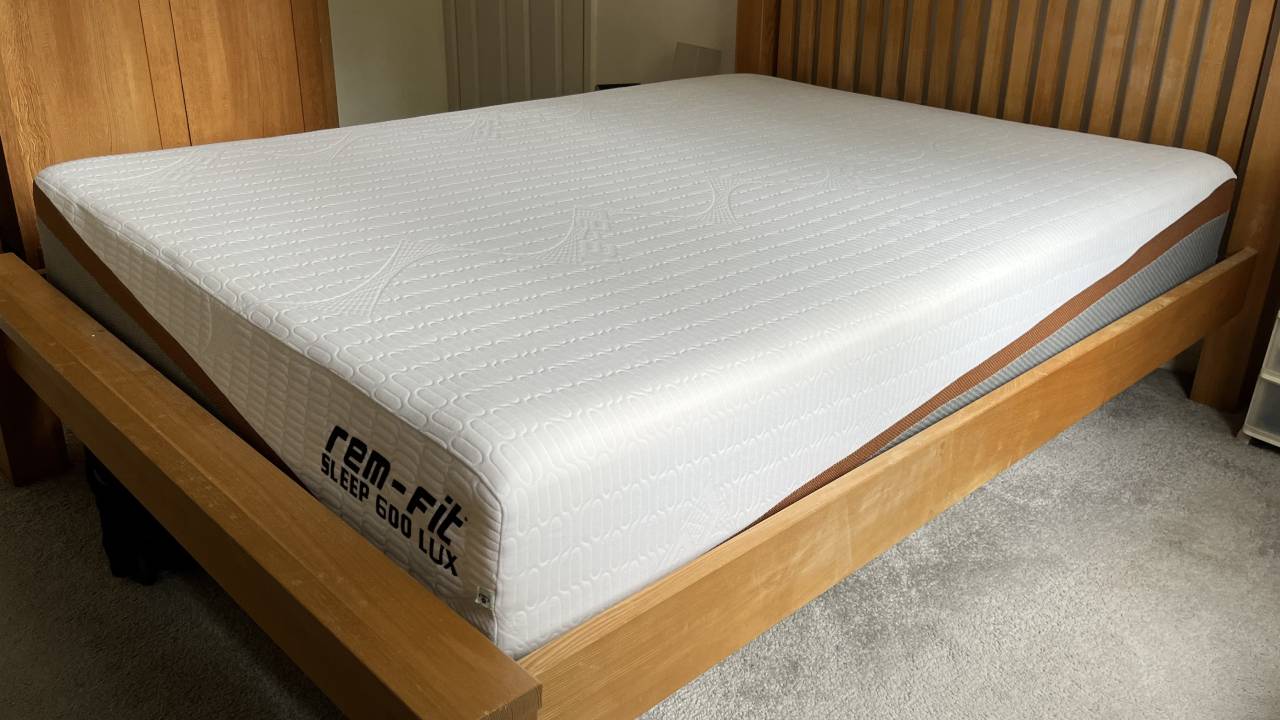

Specifications
Reasons to buy
Reasons to avoid
If you tend to wake up with back and joint pain, the REM-Fit 600 Lux Elite might be the solution you're looking for. It’s a hybrid mattress that's rated at 7.5 medium-firm. It features dual layered independent pocket springs and an open-cell memory foam layer, and has upgraded zoned support that helps relieve pressure point build-up.
It's amazingly supportive and moulds to the shape of your body to keep your spine is the 'correct' alignment. Those orthopedic springs providing provide upper and lower back support. Luxury memory foam also provides just the right amount of cushioning to pressure points like your shoulders, hips and knees.
In our REM-Fit 600 Lux Elite review, our reviewer found it a little heavy to move around but hey, once you get it into your bedroom, you don't have to worry about moving it! Aside from that small negative, the REM-Fit 600 Lux Elite mattress is a quality mattress that feels good to sink into and its hybrid construction helps cushion and protect the body.
The best luxury mattress
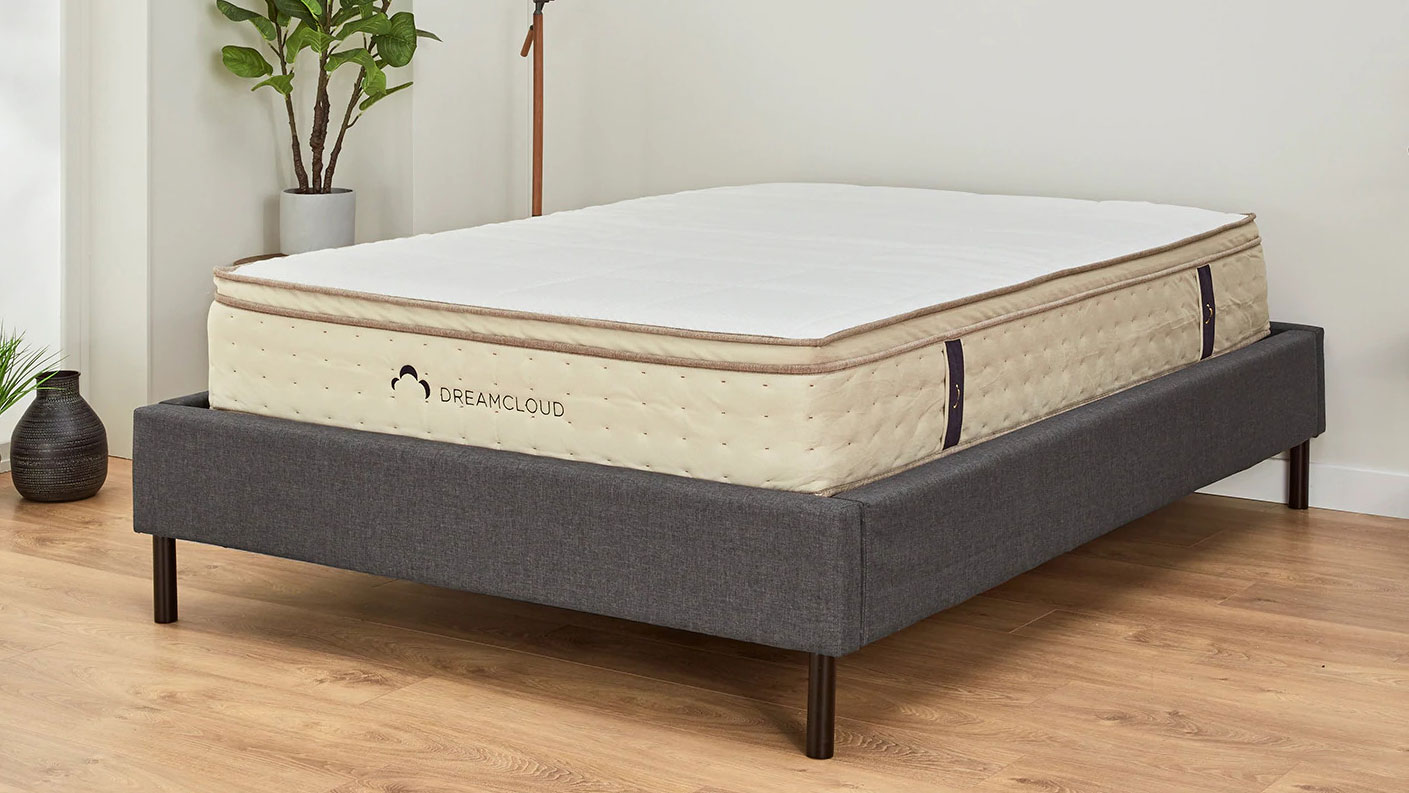

Specifications
Reasons to buy
Reasons to avoid
The DreamCloud Luxury Hybrid looks and feels like a high-end mattress, but you can often come by deals that make it much more affordable than you'd expect. Like the Simba Hybrid Pro, this one throws off our 'firmness' chart rather, by boasting a super-soft and cushiony top layer, with a firmer lower level to provide the support you need to keep your back happy in the longer term. It delivers impressive temperature regulation, although if we were to nit-pick, we think the edge support could be slightly improved. In our DreamCloud mattress review, our tester found it most comfy when lying on their back, but noted it's fine for side sleepers too.
The brand shines when it comes to extras. You get an industry-best trial period of a full year and a lifetime guarantee. DreamCloud is also a carbon neutral company, and it'll donate its old and returned mattresses to the British Heart Foundation, to give it a new home.
The best customisable mattress
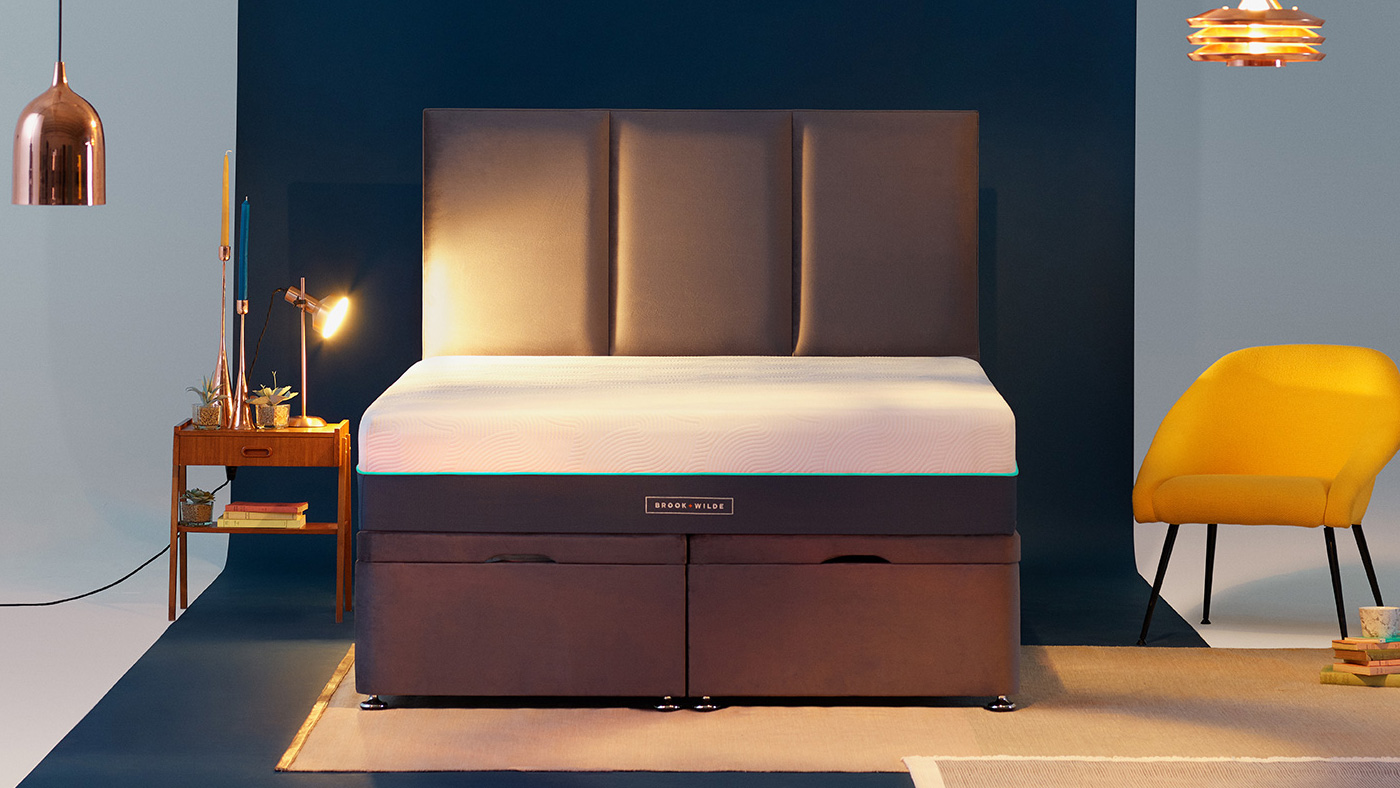
Specifications
Reasons to buy
Reasons to avoid
A luxury name in the mattress world, Brook + Wilde make incredibly luxurious and high-end mattresses, like the 5-star Brook + Wilde Elite. This mattress delivers the perfect balance of bounce from the springs and a moulding feeling from the memory foam upper. While it's extremely supportive, no matter the firmness you choose, it's also incredibly soft and nice to touch.
The best part of the Brook + Wilde Elite is that you can choose your firmness levels to suit you, your partner and your sleep position, an unusual but exciting selling point. If you want something marshmallow-esque and cosy, the soft is the best choices, whereas the firmer option is best for extra levels of support. For a middle ground between the two, we'd suggest the medium.
Read our full Brook + Wilde Elite review for all the info.
The best posture support mattress
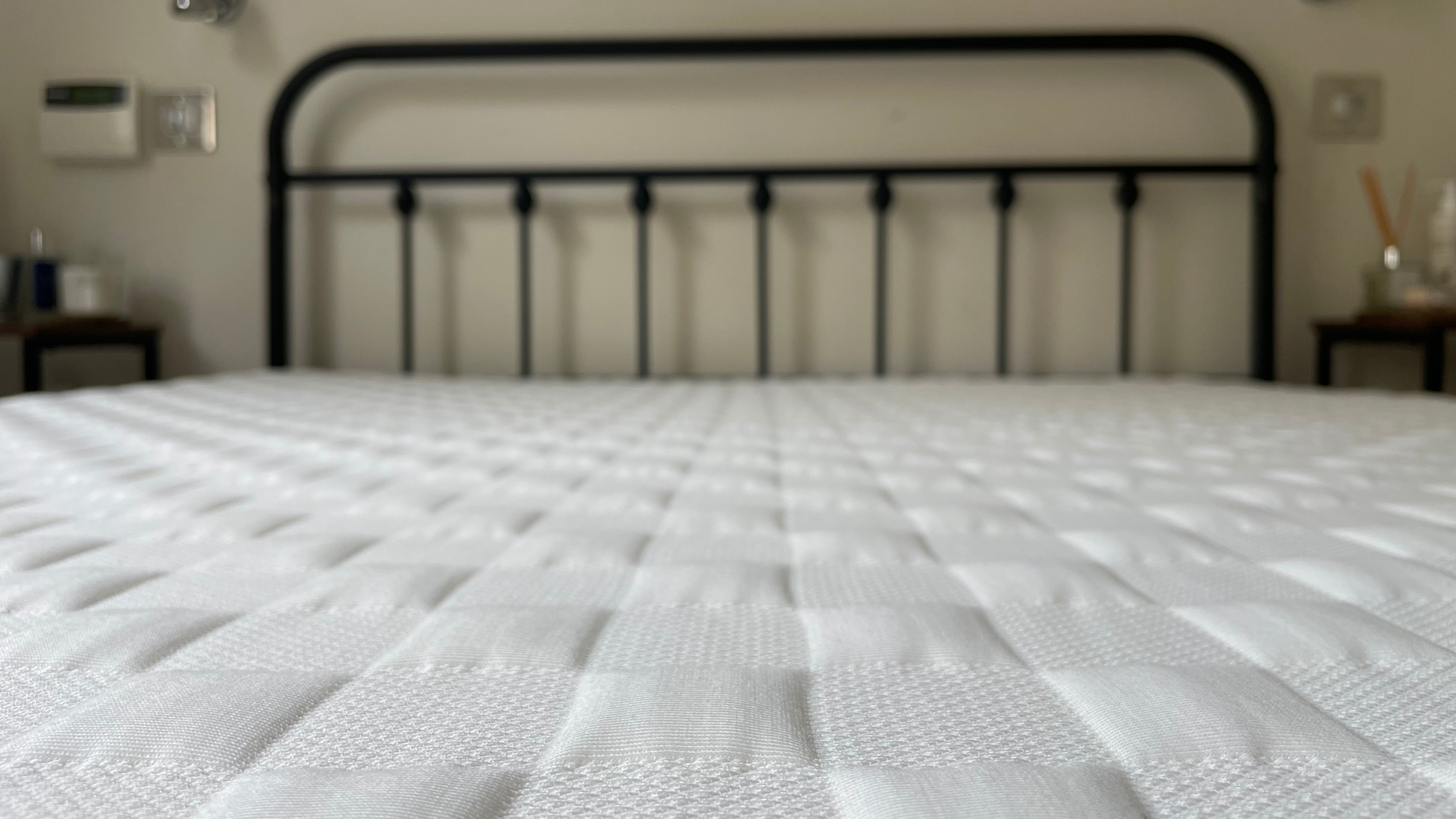
Specifications
Reasons to buy
Reasons to avoid
If you have any sleep concerns, pain issues or posture questions, the team at Levitex can answer all your questions. They offer expert advice and professional consultancy to help you better align your spine while you sleep to keep your posture perfect and reduce aches and pains. With this in mind, Levitex made its very own mattress called the Levitex Sleep Posture mattress.
While it's the only mattress the company currently sells, the Levitex Sleep Posture mattress is an extremely attractive option for people looking to improve their sleep posture. The firmness takes a while to get used to but our reviewer found it significantly improved her sleep and neck/shoulder pain.
Read our full Levitex Sleep Posture mattress review for more details.
The best anti-allergy mattress
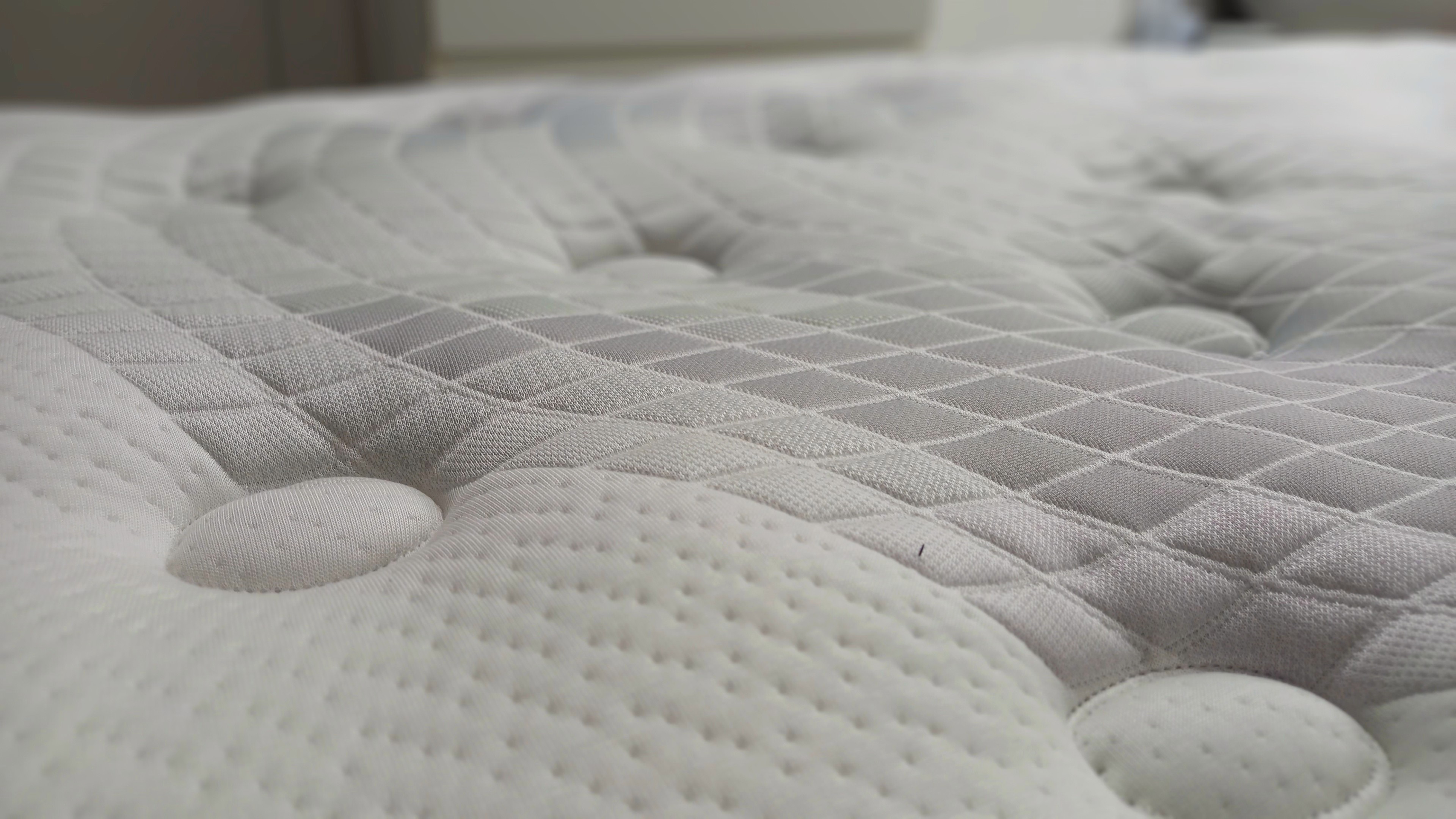
Specifications
Reasons to buy
Reasons to avoid
The Sealy Elevate Ultra Antuco mattress is a new hybrid mattress from Sealy that boasts a sophisticated design made with premium materials. Its high-end design consists of springs that are squared off at the top and bottom, and connected via a coil that runs the whole length of the mattress. Each spring is able to move in a way that moulds to your body and the foam is also immensely comfortable.
For those who like the feel of a soft mattress but need the support that tends to come from a firm one, the Sealy Elevate Ultra Antuco gives you the best of both worlds. Its patented anti-allergy tech is truly supreme so if you suffer from allergies or dust irritations, this mattress can help solve these problems.
The only negative is that it costs significantly more than the average mattress, but in return, you get high-quality durable materials and innovative construction that provides a luxurious night's sleep.
The best spring mattress
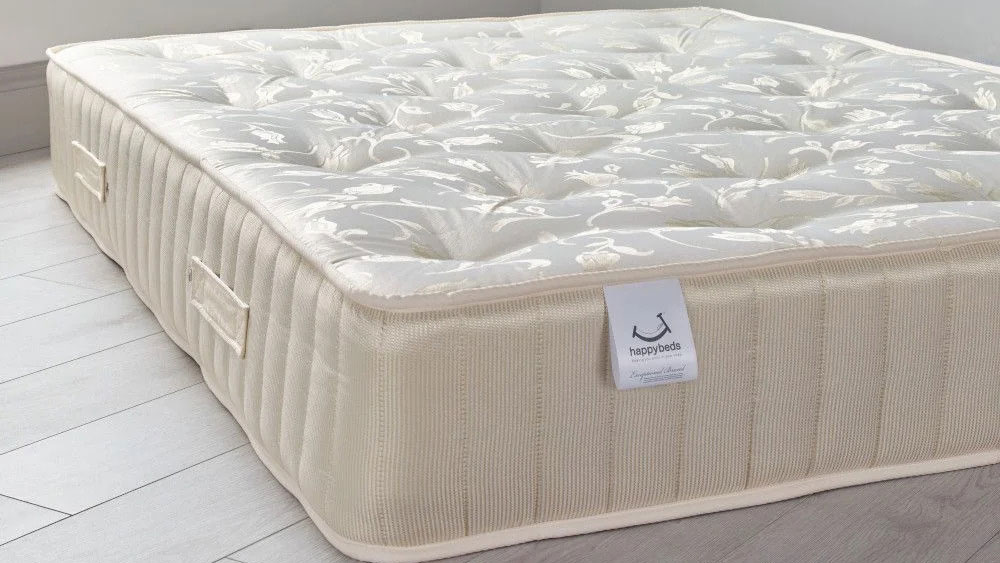

Specifications
Reasons to buy
Reasons to avoid
The Happy Beds Ortho Royale might not look as modern as most of the entries in our best mattress guide, but if you want a great value sprung mattress, it's hard to beat. Rather than pocket springs, it has an open coil system that allows air to flow through, with vents for stale air to escape from, resulting in a lovely cool mattress that won't trap heat.
Officially classed as a medium-firm mattress, in our Happy Beds Ortho Royale review our tester rated it on the firmer end of that scale. For some this will be off-putting, but others will welcome the extra support. Because it's a spring mattress, you'll sleep 'on top' of the surface, rather than sinking into it as you would with memory foam. Firmness will also depend on body weight, and the Happy Beds site has a handy tool that lets you input your weight to show you how firm the mattress will feel to you.
There's a hand-tufted damask cover, and satin pads provide a comfy sleep surface. The real star of the show here is the price though: even at RRP it's very cheap, and regular offers make things even more appealing. Note that you're sacrificing a trial period in order to get that cheap price point, and the guarantee is shorter than the industry standard too. But overall, this mattress offers strong value for money.
The best mattress with built-in topper


Specifications
Reasons to buy
Reasons to avoid
The Centurial 03 is one of three mattresses in Sleepeezee's Centurial range. Whilst it offers an array of impressive features, the pillow top layer is undoubtedly one of the best things about it. It's incredibly comfortable and ensures you get a good night's sleep, no matter how tired you are.
One thing to note is that the top later adds more depth to the mattress, meaning it comes it at 35.5cm. This does mean that you'll have to buy a deep fitted sheet to accommodate it, and standard sheets most likely won't fit. However, this wasn't too much of a problem, especially as it's so luxurious. It also has a layer of innovative Talalay latex, meaning it moulds to your body shape and offers additional support. As it's extremely breathable, this Talalay latex layer ensures you don't overheat as you sleep.
Read more in our Sleepeezee Centurial 03 review.
Best mattress: honourable mentions
- Tempur Pro SmartCool: customisable memory foam firmness
- SleepSoul Wish 3000 Series Pocket Cool Gel Mattress: a plush hybrid mattress with cool gem foam
- Zoma mattress: great mattress for athletes
- Aspire Advanced Temperature Control mattress: a dual-side option for hot and cold sleepers
- Simba Earth Source: another great mattress from Simba that's more eco-friendly
- Emma Hybrid Airgrid: Emma fixed its overheating problem with this mattress
- Eve Wunderflip: change the firmness by giving it a flip
How to choose the best mattress
One key thing to consider when making your selection is memory foam vs springs – both have their pros and cons. For the money, we'd go for a hybrid that combines both materials.
How often should you change your mattress? More often than you might think: most experts suggest upgrading every 6-8 years under normal conditions. It might be an investment, but it's one worth making if you can afford it. Studies have found that newer mattresses can significantly improve your sleep quality and reduce aches and pains. And even if you clean your mattress regularly, sweat, dead skin cells and dust mites build up to frankly horrifying levels fairly quickly. You can help matters by adding one of the best mattress protectors, and bunging it in the washing machine regularly.
If you're unsure about sizing, our mattress size guide will help you out (with info on the sheets and bedding you need, too).
How we test the best mattresses
We test mattresses by sleeping on them for at least a month before writing up our thoughts. Wherever possible, we'll also update our reviews after 6 months or more, with any thoughts on the performance and durability of the mattress over a longer period.
During the test period, we focus on the design, comfort and performance of the mattress. On the design front, we'll look at things like how well the mattress is made, the materials used and whether it looks and feels high quality, and if there are extra features like zip-off top covers or handles to help you move it around easily.
For comfort, we'll consider what it's like to sleep on in a range of positions – does it provide sufficient support under the hips and spine? Is it soft enough that if you lie on your side, you won't wake up with any achy shoulder? Does it trap body heat so you wake up a sweaty mess in the summer months?
We'll also look at edge support (i.e. whether it's possible to sit or lie near the perimeter of the mattress without feeling like you're going to roll off) and motion transfer (i.e. if someone else is in the bed with you, to what degree you feel their movements).
Finally, we'll also consider the extras offered by the company – what's the delivery process like? Is there a good trial period? What about the guarantee? Because there are regular deals on in the mattress world, all these factors are weighed up against the price with a typical discount factored in, to get an overall view of if the mattress is a good buy for the price.
For more details, read how we test at T3.
Mattress FAQs
What is the best type of mattress?
There are a few different mattress types on the market right now. As you start your hunt for the best mattress, there are certain terms you're going to come across a lot – the difference isn't complex, but it's helpful to understand what each term means before you get shopping. The three main mattress types you're going to come across are memory foam, pocket sprung or hybrid. For more info, head to our memory foam vs spring mattress comparison.
Memory foam
This type of mattress has exploded in popularity over recent years. Memory foam is a responsive material that reacts to your temperature and weight to mould gently around your body as you lie on it. Memory foam mattresses offer great support and comfort, and are perhaps the most popular mattress type right now, with most of the big brands offering their own takes on this material.
One potential down-side is that memory foam traps body heat in a way you don't get so much with springs. So in the winter you'll have a lovely cosy bed, but in the summer you might find yourself getting a little warmer than usual – which can be an issue if you sleep hot. Many brands have introduced cooling top layers to counteract this. You can read more in our memory foam mattress buying guide.
Pocket sprung
Pocket sprung is a more traditional mattress type. These mattresses include thousands of small springs inside their own fabric pockets. Although they will adapt to your body shape, they're not as supportive as memory foam, and may provide less movement isolation (problematic if you've got a restless bedmate). They offer a bouncier surface to sleep on – you won't sink into a pocket sprung mattress the same way as you would a memory foam one.
Hybrid
The term 'hybrid' technically could refer to any mattress that's made up of different materials, but it typically means a mattress that combines layers of pocket springs and memory foam. This makeup offers more bounce than memory foam-only mattresses, but with the added support and comfort of a memory foam upper.
What other mattress materials are there?
There are a few more terms you might come across in your search. These mattress types are a little rarer, but still worth knowing about.
Latex: A breathable, springy material that's exceptionally durable and resilient. Can be expensive.
Continuous and coil: Made from a single looped wire, or from single springs fixed with one wire. These are cheaper and less likely to give a good night’s sleep.
Bed in a box: This refers to a delivery method, in which mattresses are compressed, rolled or folded into a box for easy home delivery. They're usually foam, or a memory foam and spring combination.
One more bit of advice before you start shopping: don't put too much emphasis on mattress type. Personal factors like your height, weight, body shape, sleeping style and temperature are far more likely to affect how comfortable you find a specific mattress. All our picks recommended in our best mattress guide above have been designed to deliver outstanding support and comfort for the majority of people – regardless of their material.
How do I check if a mattress is suitable for me?
Before buying a mattress, make sure it’s the right size. Your mattress – like your bed – should be 10cm longer than the tallest person sleeping in it. It should also be wide enough for you and a partner to put your hands under your head without your elbows touching (or without touching the edge of the mattress if you’re not sharing).
Next, do the hand test: lying down on your back, push your hand under the small of your back. If you can’t, the mattress is too soft; if the gap is very large, it’s too hard. And if you have a partner, make sure they try it, too: what feels fine on your own may be like a bouncy castle with someone else on board.
Lastly, also check whether a mattress needs turning. Many don't these days, but if you’re considering one that does, make sure it has handles.
How do I clean a mattress?
Cleaning a mattress is a lot simpler than you might think, and it needs to be done fairly regularly if you want a hygienic night's sleep. You should also clean your bed sheets once a week or every two weeks for ultimate freshness.
The first step to clean your mattress is to strip your bed of sheets. Next, vacuum your mattress to get rid of crumbs, hair and any dirt. For stains, use a stain remover or a 50/50 mix of hydrogen peroxide and cold water to remove urine and other stains.
Before you put sheets back on, sprinkle your mattress with baking soda and leave it to air for a while. This neutralises any smells and makes your mattress fresher.
Reviewer panel

Bethan Girdler-Maslen has covered sleep and wellness on T3 for several years, and has quickly become a sleep expert. She has tested many of the mattresses in this guide and outside of it, including models from Simba and Emma.

Lizzie Wilmot is Home Writer at T3, covering sleep, gardening, smart home and appliances. She's tested many of the best mattresses, including models from Sleepeezee and Levitex.

As Editor-in-Chief at T3, Mat Gallagher has covered many different sections on the site, including auto, tech and home. He has tested many mattresses, including models from Eight Sleep and Panda London.

Ruth Hamilton previously had the role of Wellness and Outdoor Editor at T3, and Sleep Editor at TechRadar before moving to the role of Homes Editor. She's tested many mattresses, including models from Brook+Wilde and OTTY.

Tom May is a freelancer journalist and author of Great TED Talks: Creativity: An Unofficial Guide with Words of Wisdom from 100 TED Speakers. He covers sleep on T3, including tips and tricks, and reviews of mattresses from Sealy, Tempur and more.
Sign up to the T3 newsletter for smarter living straight to your inbox
Get all the latest news, reviews, deals and buying guides on gorgeous tech, home and active products from the T3 experts

Beth is Home Editor for T3, looking after style, living and wellness. From the comfiest mattresses to strange things you can cook in an air fryer, Beth covers sleep, yoga, smart home, coffee machines, watches, grooming tools, fragrances, gardening and much more. If it's something that goes in your house, chances are Beth knows about it and has the latest reviews and recommendations! She's also in the know about the latest deals and discount codes from top brands and retailers.
Having always been passionate about writing, she’s written for websites, newspapers and magazines on a variety of topics, from jewellery and culture, to food and telecoms. You can find her work across numerous sites, including Wedding Ideas Magazine, Health & Wellbeing, The Bristol Post, Fashion & Style Directory, TechRadar, CreativeBloq and more. In her spare time, Beth enjoys running, reading, baking and attempting craft projects that will probably end in disaster!
-
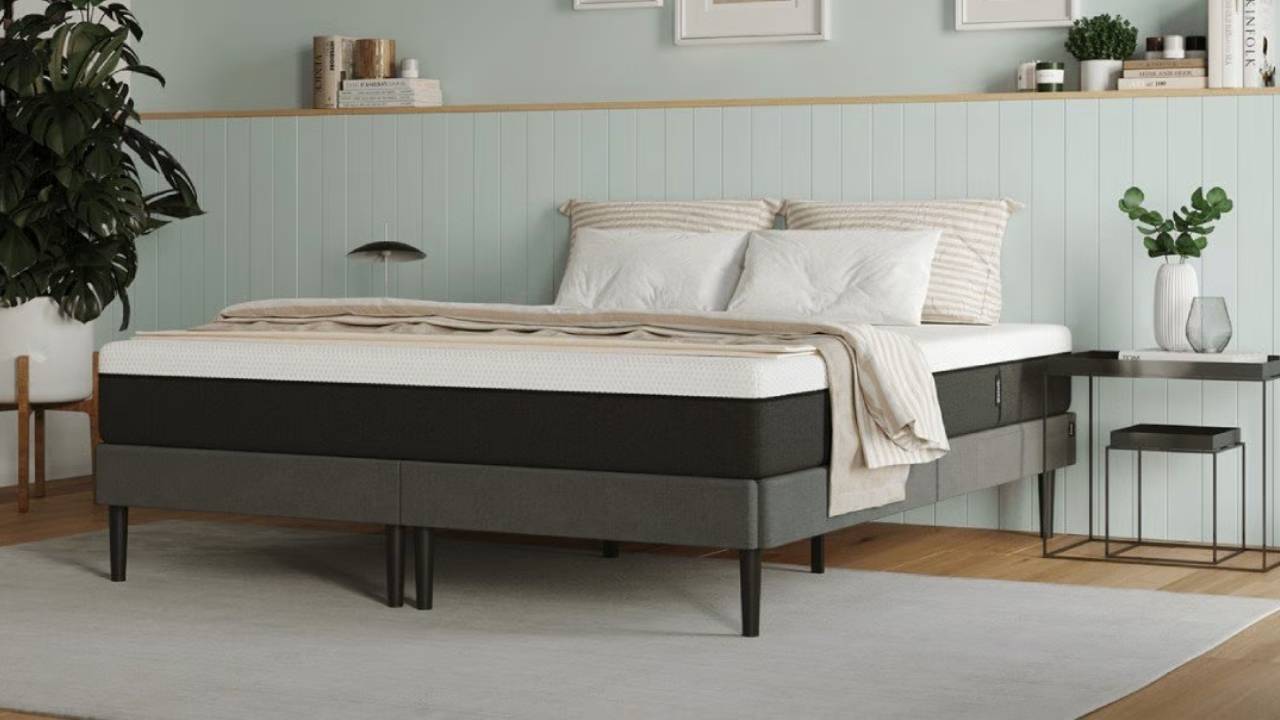 5 things I wish I'd known before buying an Emma mattress
5 things I wish I'd known before buying an Emma mattressRest easy with everything you need to know before investing in an Emma mattress
By Louise Blain
-
 Best mattress 2025: cozy beds for all types of sleepers and budgets
Best mattress 2025: cozy beds for all types of sleepers and budgetsFind the best mattress for you, including memory foam, springs and hybrid options
By Bethan Girdler-Maslen
-
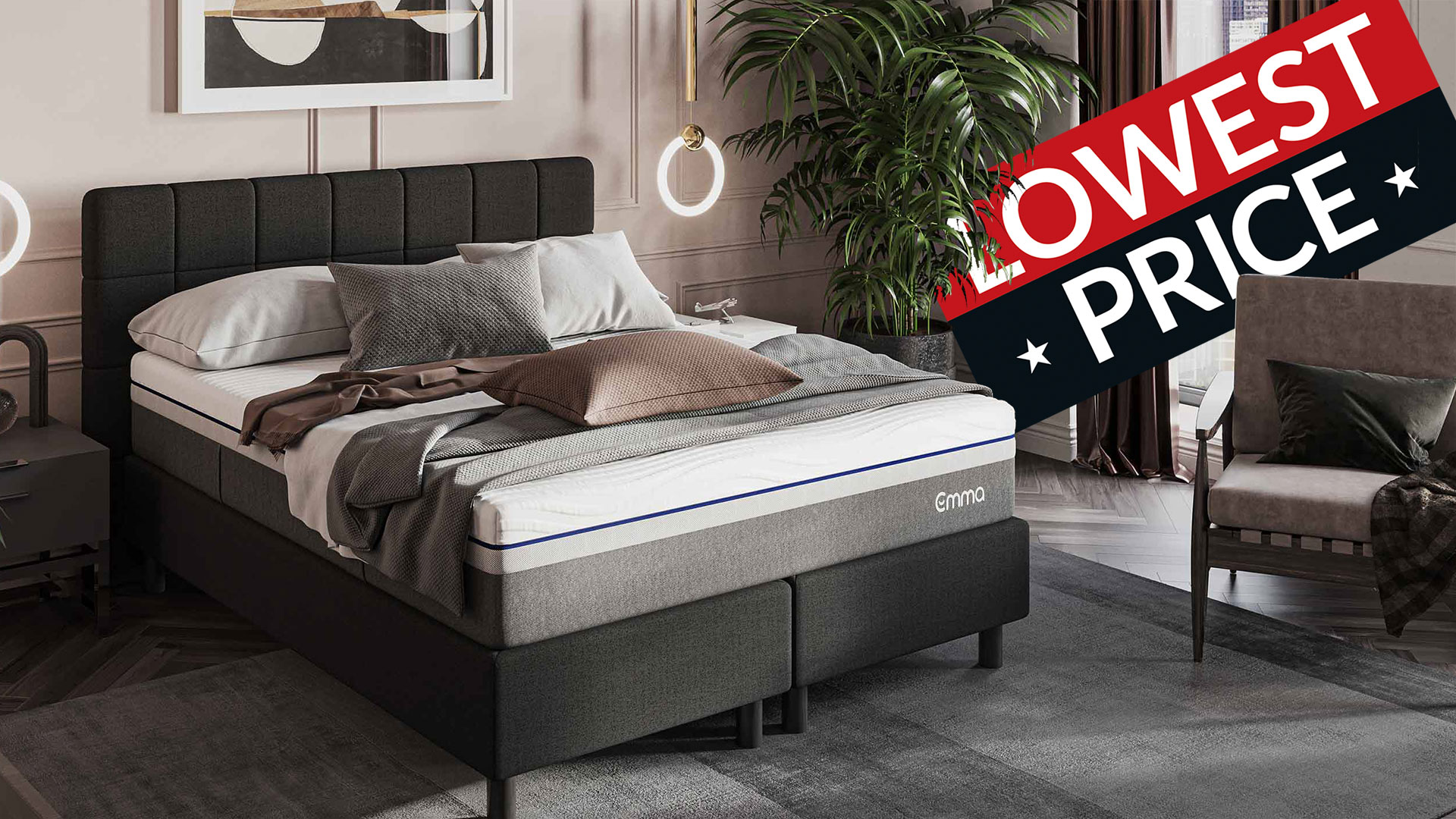 Emma mattress sales, deals and discount codes for April 2025: your guide to the best Emma sales
Emma mattress sales, deals and discount codes for April 2025: your guide to the best Emma salesLooking for an Emma mattress deal? Find all the best Emma sales, deals and discount codes in this guide...
By Bethan Girdler-Maslen
-
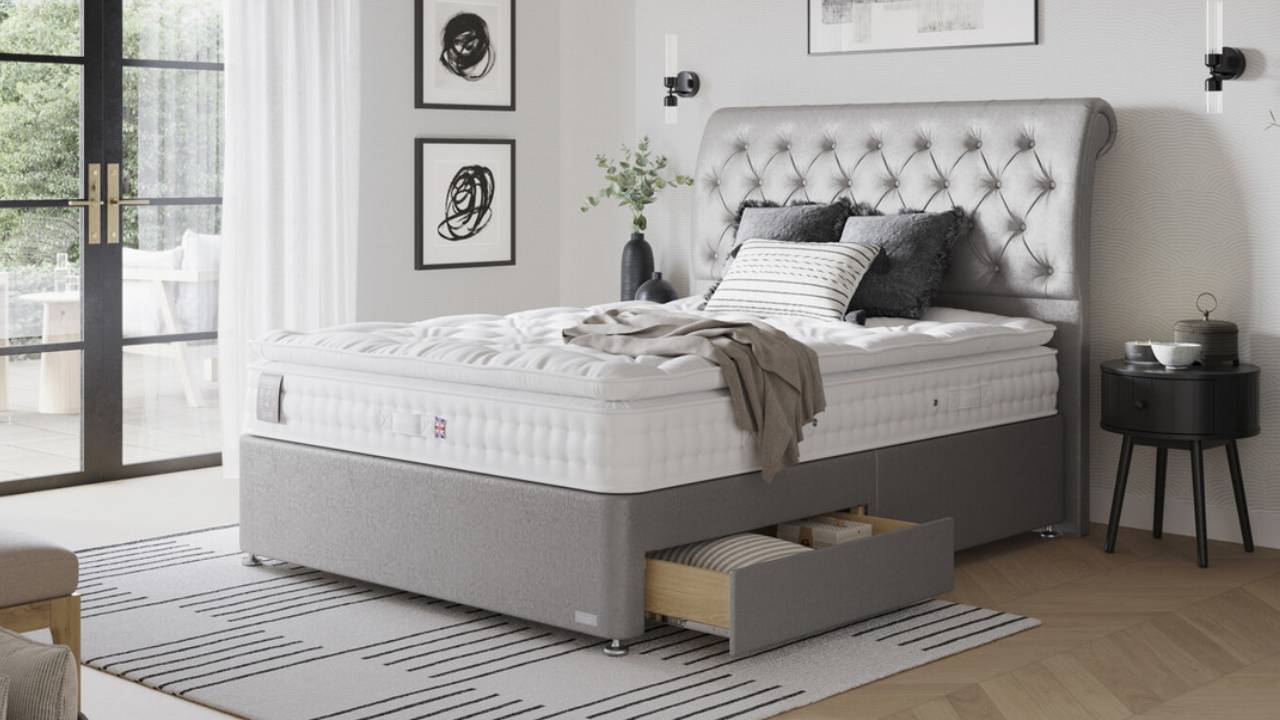 Bensons for Beds new Artisan mattresses prove that springs are making a comeback
Bensons for Beds new Artisan mattresses prove that springs are making a comebackThese luxurious mattresses will give you a spring in your step… or sleep
By Bethan Girdler-Maslen
-
 Best personalised nutrition test 2025: find out what works for your body and why
Best personalised nutrition test 2025: find out what works for your body and whyFeature Which personalised nutrition tests are the best on the market? Here's our top recommendations
By Lizzie Wilmot
-
 Best robot lawn mower 2025: autonomous mowers that cut the grass so you don't have to
Best robot lawn mower 2025: autonomous mowers that cut the grass so you don't have toThese are the best robotic sward scythes to keep your lawn in tip-top condition while you sit back and relax
By Derek Adams
-
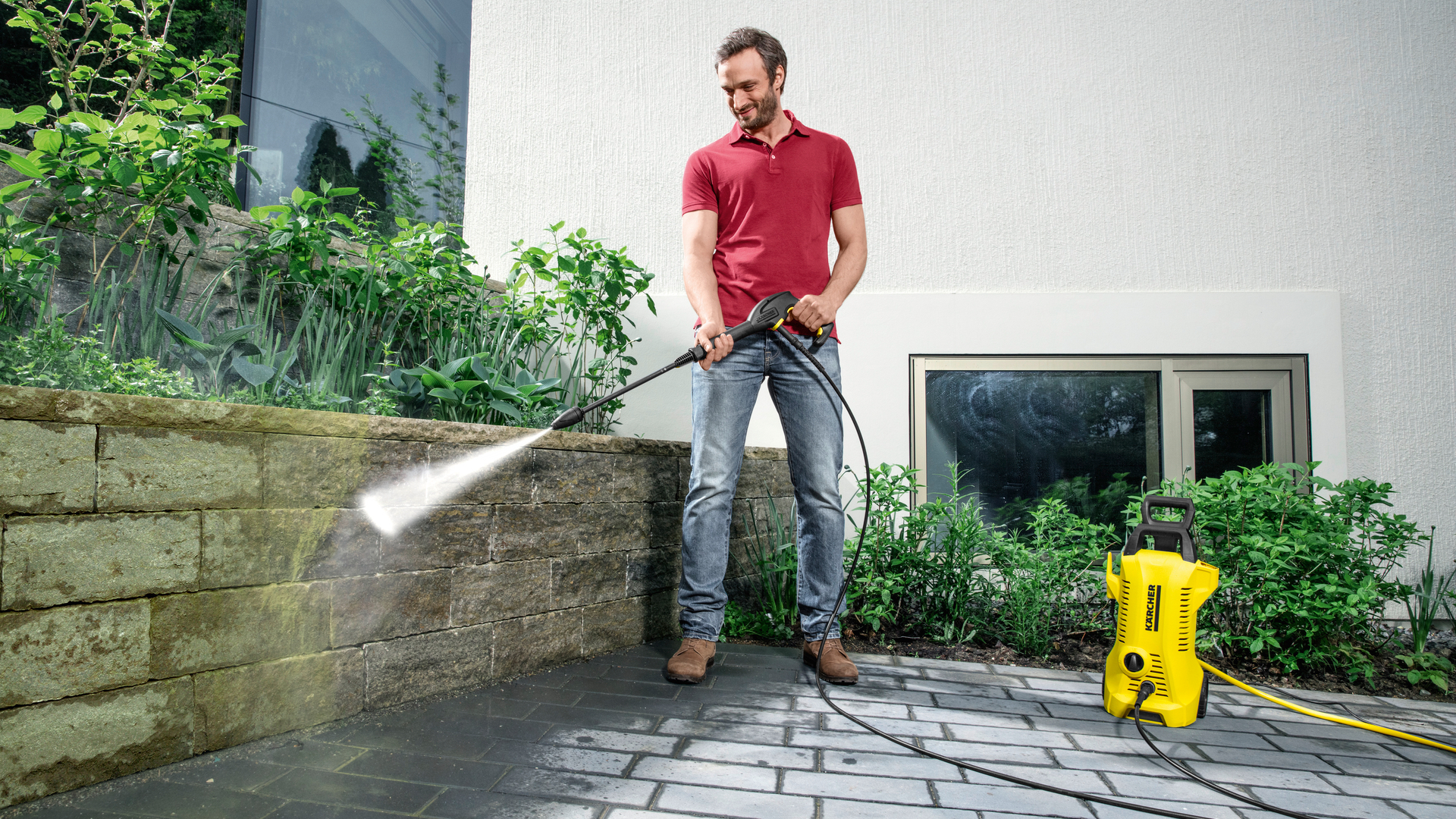 Best pressure washer 2025: clean everything from patios and decking to cars and mountain bikes
Best pressure washer 2025: clean everything from patios and decking to cars and mountain bikesGet brilliant results and save a lot of elbow grease with the best pressure washers on the market
By Lizzie Wilmot
-
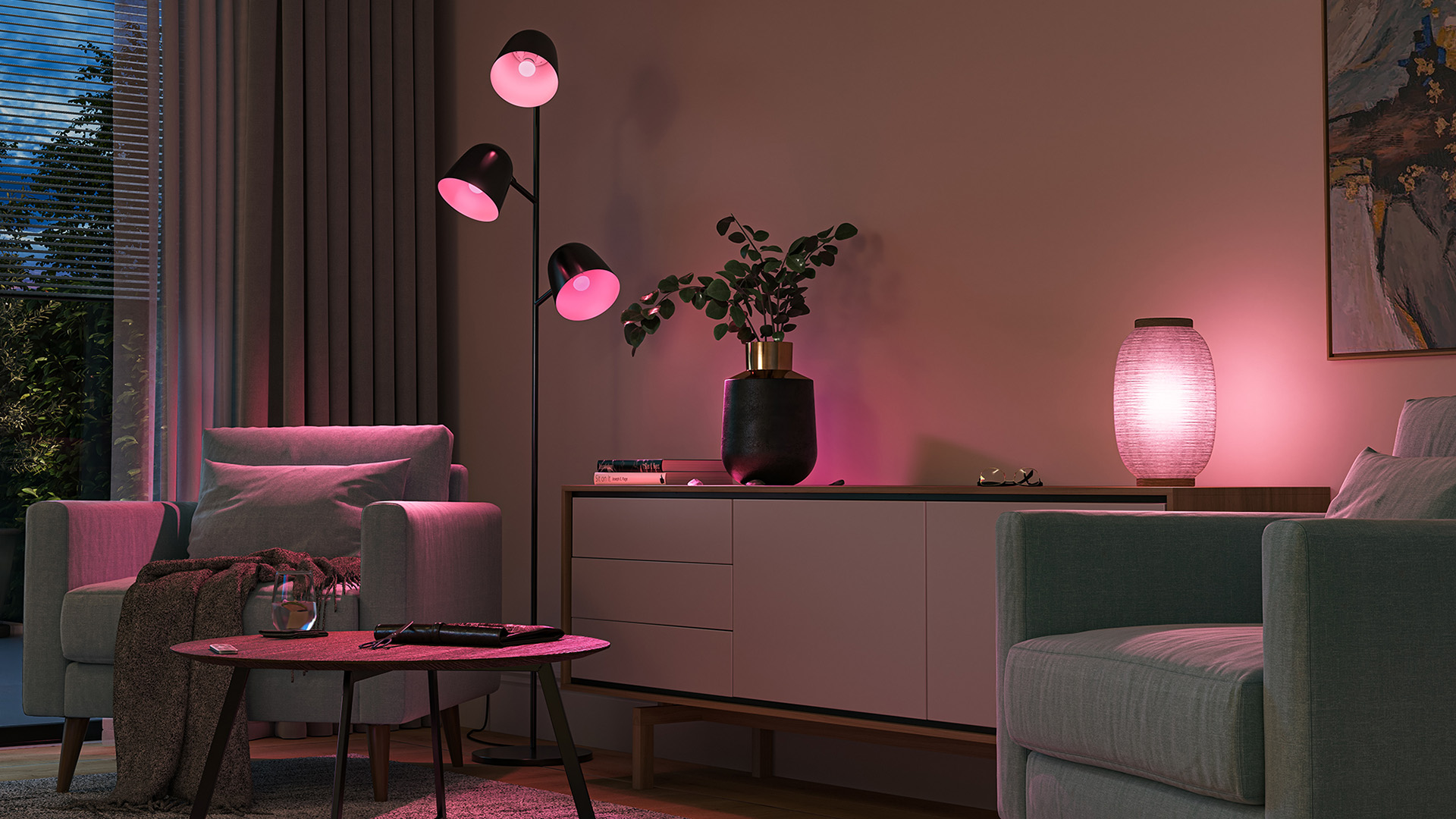 Best Philips Hue lights 2025: sophisticated smart bulbs for your space
Best Philips Hue lights 2025: sophisticated smart bulbs for your spaceThe best Philips Hue lights bring state-of-the-art, remote-controlled lighting to your home
By Lizzie Wilmot
-
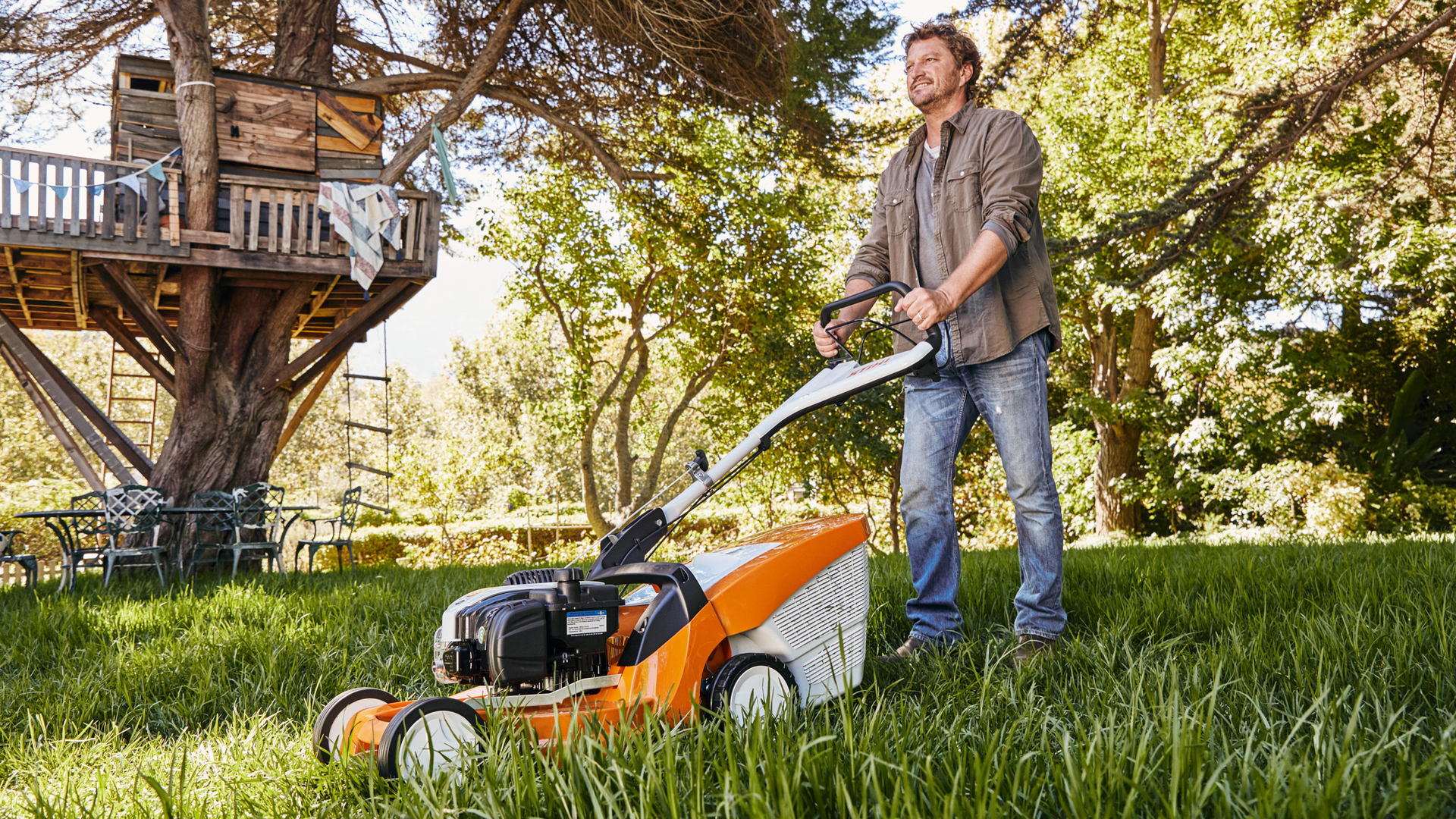 Best petrol lawn mower 2025: rugged lawn mowers for larger gardens
Best petrol lawn mower 2025: rugged lawn mowers for larger gardensTrim the sward with one of these top-rated petrol-powered lawn mowers
By Lizzie Wilmot
-
 Best pizza ovens 2025: enjoy the crisp, crunch and gooeyness of freshly-baked pizza
Best pizza ovens 2025: enjoy the crisp, crunch and gooeyness of freshly-baked pizzaFind the best indoor and outdoor domestic pizza ovens to make your al fresco bash go off without a hitch
By Derek Adams
-
 Best electric barbecue 2025: indoor and outdoor grills for all-year-round cooking
Best electric barbecue 2025: indoor and outdoor grills for all-year-round cookingFind the best all-in-one electric barbecues and grills with plug-and-play convenience
By Bethan Girdler-Maslen

